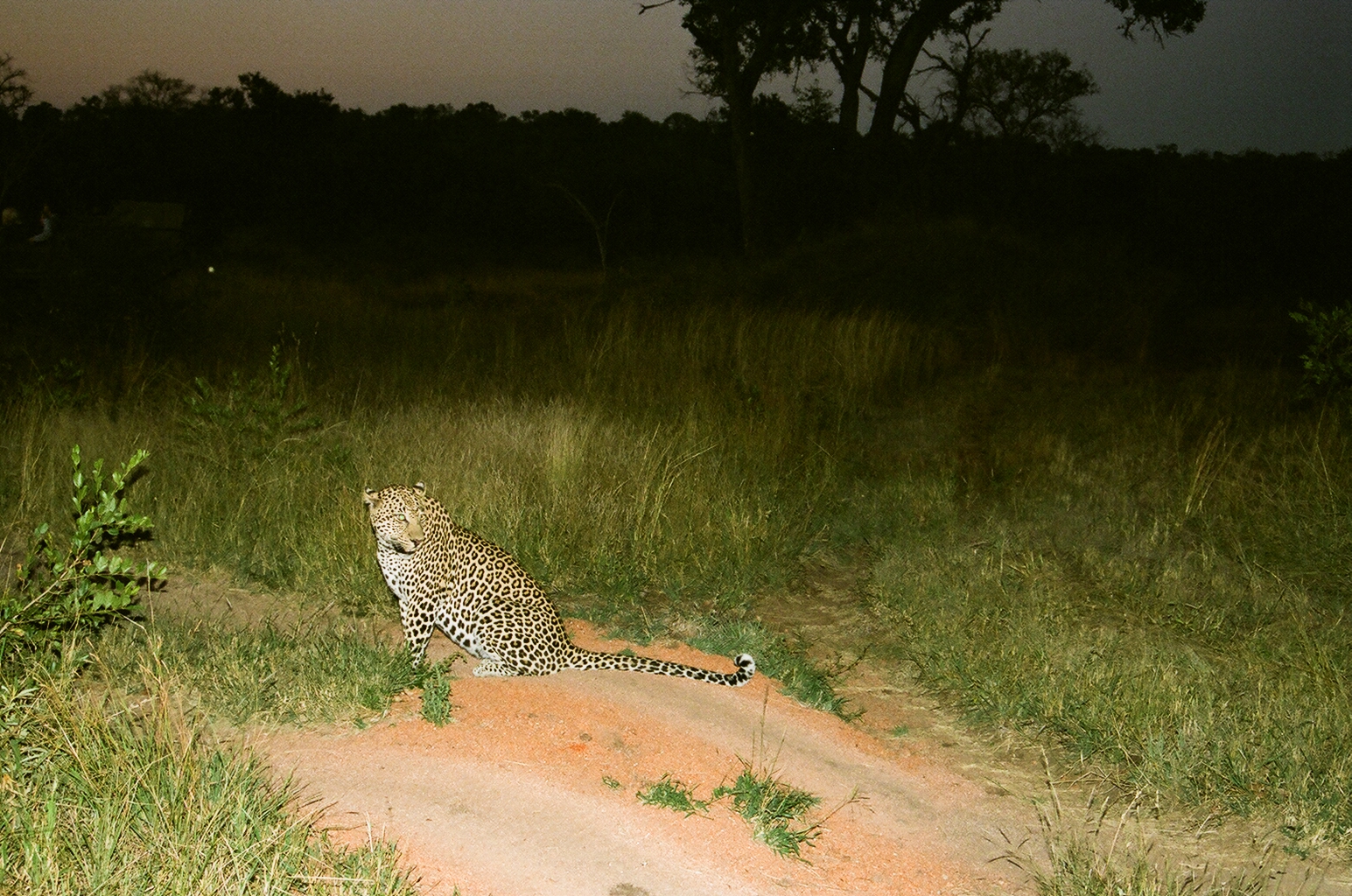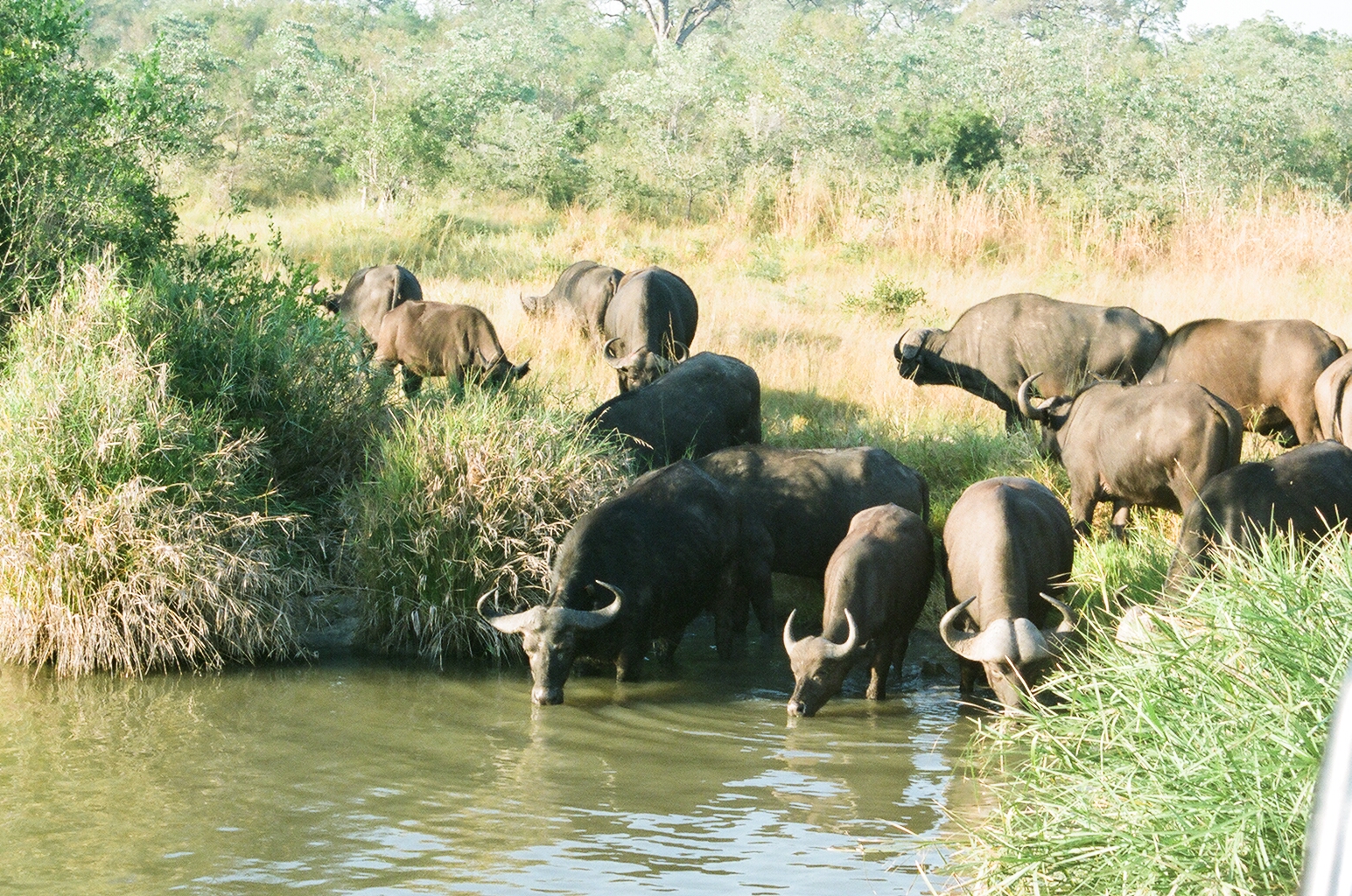
When I interviewed iconic comic actor Bob Newhart in 2007 for AARP: The Magazine, I asked what his favorite vacation of all-time was. "I recently went on a safari in South Africa and it was like going back to the Garden of Eden," he responded, the memory lighting up his face.
My wife, Sandra Wells, and I decided we wanted that transcendent experience. But editors resisted: safaris had already been written about (and they wouldn't want to run another story about Paris, we assume). Or they argued that Americans think Africa is too dangerous because of disease, crime and terrorism (thank goodness it's safe here).
Finally, an assignment came through for just two days in Johannesburg and two on a safari. It was a daunting challenge: how do I write the story if the animals don't show up on schedule? But we decided this was going to be our only opportunity and embraced the risk of a journey of 21,000 miles. This is a summary of what happened.
When most people think of a safari, they picture massive herds of animals followed by smaller herds of tourist mini-buses on the plains of East Africa. South Africa offers a more intimate and uncrowded opportunity near major cities (which means you can experience the wild and still have the benefits of civilization). It's an underappreciated destination.
The climate is warm and dry much of the year, with seasons opposite to those in the U.S. The rainy season is November through March, but storms last an hour or two and tours continue in between at discounted prices. We decided to go in early April before the high season's prices and heat kicked in.
Our first step in preparing was to go to Passport Health in Los Angeles, which is owned by native South African Rayann Aziz, for a customized review of our medical history and needs, including malaria tablets and an emergency medical kit (see Resources at the end).
We chose South African Airways because it has the most flights at the best prices and provides much better customer service than the competition. We flew out of Washington, D.C. to O.R. Tambo airport.
Joburg (as locals call it) is the business capital of South Africa, with 3.6 million people. While some areas are potentially risky, the same precautions would apply to visiting large U.S. cities. The first impression is of a Mediterranean town, with its low buildings and red-tiled roofs (with solar panels), as well as low-key billboards. But it has six million trees, making it the world's largest man-made urban forest. The Gautrain is an easy, inexpensive, and safe way to get around to most areas and taxis are reasonably priced.
We stayed at the Saxon Hotel in the suburb of Sandton (where Nelson Mandela spent a year writing his autobiography, My Long Walk to Freedom, published in 1994 when he became South Africa's first democratically-elected president). It has been repeatedly ranked one of the best boutique hotels in the world, famous for its secluded location, beautiful grounds, original African contemporary art and wine cellar.
After sleeping off jet lag when we arrived on a Sunday morning, we still had time to make it to the Origins Centre, an excellent exhibition on early humans at the University of Witwatersrand. Rian Malan, author of the classic text about apartheid, "My Traitor's Heart," once said, "There is a possibility that Johannesburg was once the Garden of Eden, that our ancestors would have lived here 150,000 to 200,000 years ago." That reference was serendipitous, it would turn out.
Origins focuses on how humans spread across the globe after leaving Africa (the cosmic joke on the former racist regime is that the evidence that we share 99.9 percent of the same DNA came from South Africa; the university offers a test for visitors who want to know their ancestral details). Origins also shows what is regarded as the first indication of modern humans: art in the form of a carved rock and a necklace dated at 77,000 years.
The next day we were picked up by guide Chris Green of Cashan Tours for a day in the Cradle of Humankind, a World Heritage site an hour out of Joburg. It includes 300 caves, such as Sterkfontein, which has the world's longest archaeological excavation, producing a third of the early hominid fossils (human-like creatures, some of them our ancestors). Nearby, the first evidence was found of hominid control of fire as early as 1.8 million years ago.
We started at the Maropeng Centre, whose interactive displays show the progress of evolution after our ancestors diverged from apes back eight million years. Now we are so rapidly using up resources that we are failing to adapt to the new environment, which is what caused the extinction of our cousins.
The next morning we took a Federal Air hour-long flight onto the airstrip at Sabi Sabi Game Reserve. It is located in southwest Kruger National Park, the largest wildlife sanctuary in the country, and last year Conde Nast Traveler readers voted it the best safari camp in Africa.
At 4 p.m., Ranger Marcus took a small group of us in an open Land Rover for our first three-hour drive through the savannah of tall grass, bushes and occasional trees (take Dramamine or three ginger capsules a half hour in advance, since the roads are rough). While this area gave us the best chance to encounter the Big Five (lions, leopards, elephants, rhinos, Cape buffalos), there are visitors who visit for five days and encounter only one. For the first couple of hours we only saw impala antelope.
Then suddenly we came across a leopard and the hair on the back of our necks stood up as it majestically strolled so close we could have touched it, if we wanted to lose a hand (Marcus said that the only time one had attacked was when someone stood up to take pictures; wild animals tolerate vehicles unless surprised). Travelers know that if a picture is worth a thousand words, a direct encounter is worth a thousand pictures and this was one of those moments.

An hour later, as we turned a corner in the darkness just before arriving back at the camp, we nearly ran into a mother white rhino and her baby. Baby started towards us out of curiosity, as the mother snorted a warning and Marcus put the Rover in reverse, warning us not to take flash pictures. This was no zoo.
The next morning we encountered a small group of elephants, which quickly disappeared. We also came across rare and colorful wild dogs playing, as well as zebras, not often seen this time of year. The highlight was when we parked at a watering hole and soon found ourselves surrounded by 200 Cape buffalo, which usually travel in groups of less than 15. They and leopards are the two creatures that cannot be bluffed to back away: if they feel threatened, they will attack. We very, very slowly made our way through the herd or we would have been trapped for hours.

During the evening drive, we saw nothing but impala, so we realized how lucky we had been.
As Henry David Thoreau wrote, "In wildness is the preservation of the world." We need to unplug periodically to get in touch with nature and the Eden within, otherwise evolution will move on to the next stage without us.
RESOURCES
Best book DK Eyewitness Travel South Africa
Tour guide Chris Green http://www.cashantours.weebly.com
Itineraries for visitors http://www.southafrica.net
Origins Centrehttp://www.origins.org.za
Maropeng Centre http://www.maropeng.co.za
Passport Health http://www.passporthealthla.com 323/297-0700 (or outside L.A. http://www.passporthealthusa.com)
South African Airways http://www.flysaa.com or http://www.flysaavacations.com 800-593-1318
Saxon Hotel http://www.saxon.co.za
Sabi Sabi http://www.sabisabi.com
Federal Airhttp://www.fedair.com for flight to Sabi Sabi